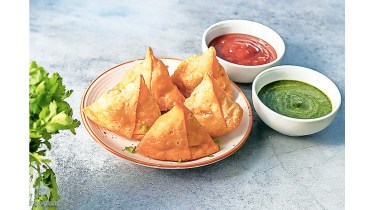India’s favourite snack might come with a warning soon. With the Food Safety and Standards Authority of India (FSSAI) planning to roll out oil and sugar advisories along with street foods high in fat and sugar content, especially in schools, a dissection of our Indian street snacks and their contents is in order. From samosas, jalebis, and misal pav, to kebabs, pani puri and momos — foodies are now expected to be aware of the calorie contents and health benefits or lack thereof, of our timeless roadside delicacies as well. Whether it will take the fun out of roadside snacking, or make it a more conscientious affair, remains to be seen.
India has one of the largest snack markets of the world and people consume more than 400,000 tonne of snacks every year. Three-fourths of this is made of more than 1,300 ethnic snacks, savouries and sweets, according to a paper titled High Trans Fatty Acid Content in Common Indian Fast Foods published on ResearchGate. According to the FSSAI, this is reportedly not to shame the eater or the food or issue alerts on these items, rather to inform them of the ingredients and pros and cons of food items regularly consumed by the average Indian — specifically in school and college canteens, office lobbies, and cafeterias.
Nutritional reality of Indian street food
The snack that has been exemplified repeatedly in this conversation is the samosa — which contains roughly 200-350 calories a piece.
Given that a grown adult needs a total intake of 2000 to 2500 calories daily, medical experts say that getting those calories occasionally from street foods is harmless. Regular consumption may lead to other health concerns due to the trans fatty, sugary and deep fried nature of these items.
While a samosa will be 300-350 calories, a samosa chaat might raise that to 403 calories, according to Dr Trust, a health and wellness brand in India. Pav bhaji comes close with 390 calories, and a 100 gram serving of jalebis may contain over 350 calories. These are all dishes laden with carbs, deep fried in oil or laden with butter, and filled with sugar syrup, respectively.
Different street food items are popular in different regions of the country, often considered delicacies and very much a part of the region’s culture. For example, a regular serving of papdi chaat was consist of approximately 242 calories, with all of the components that go into assembling the dish, a plate of idli or a full dosa in South India, along with its accompaniments would amount to just over 300 calories – made with rice batter, this particular item is high in carb content (78% approx.), but not so high in sugar and trans fats.
While popularised in north India, kebabs are a preferred snacking item across the country, and contains nearly 580 calories per piece, and while other favourites like pani puri and vada pav contain 216 calories and 290 calories, respectively. When consuming street food, it may be advisable to be conscious of the calories intake and manage diet for the rest of the day accordingly. These foods become unhealthy mainly because of frying in oil that has been reused multiple times, or ‘burnt oil’ — becoming a cauldron of free radicals and carcinogens. Using cooking oils past their smoke point, or the temperature at which the oil starts to break down, allows for the release of carcinogenic compounds, and can cause respiratory issues as well as other health concerns. That is the more pressing risk.
Bigger picture: Indian vs. Western snacks
While the quintessential samosa is being used as an example to illustrate the FSSAI’s plan, there are several other street food items that are far more calorie heavy than the samosa, as is evident. More pertinently, American street foods, also popular in India, pose a significant risk to health, which has raised the question of whether such advisories are at all necessary for Indian foods, or are they being implemented on account of the carb and calorie content of popular American street food items.
A regular burger (depending on ingredients) can contain anything from 300 to 700 calories per piece, while a whole pizza contains almost 2000 calories (based on crust and toppings), frankies contain approximately 217 calories a piece. A large tub of popcorn and a coke at a movie theatre would contain 1000-1600 calories and 300-315 calories respectively. Popular treats like a pretzel can contain anywhere from 340 to 440 calories depending on whether it is sweet or savoury. Evidently, the calorie content of western snacking items are much more damaging per serving than the Indian counterparts.
As far as the FSSAI’s plan to roll out cautionary warnings with these food items is concerned, a common apprehension amongst foodies soon after it was announced was that — these food items will now begin to come with warnings akin to the ones we see on cigarette packets. Discussions on the subject on the webspace surround the possibility that posters, stickers or advisories with unpleasant and disturbing visuals, much like the ones on cigarette packets, will start featuring around street food stalls as well. But FSSAI on directives from the Health Ministry has said that these cautionary warnings will be put out in the form of oil and sugar advisories, much like the sugar boards mandated for CBSE schools in the recent past.
Calorie content
Kebab: 581
Chole bhature: 511
Samosa chaat: 403
Pav bhaji: 390
Samosa: 300-350
Idli sambar: 304
Vada pav: 260-290
Papdi chaat: 242
Noodles: 196
Bhelpuri: 188
Source: Dr Trust, Practo
